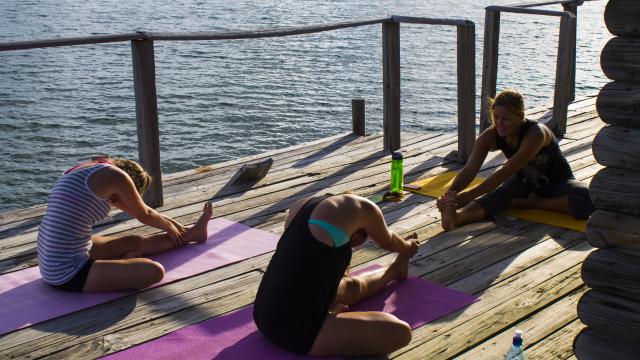Just as ballet dancers need to learn a few words of French, and runners need to be able to hear and speak the Swedish word fartlek without giggling too much, people who practice yoga will do best if they can understand the Sanskrit and other terms that are common in yoga classes and yoga videos.
If you’re an old hand at yoga, I’d love to hear what terms tripped you up in the beginning, and what advice you would give to beginners to follow along in their first classes. In the meantime, here are a few terms everyone should know:
-
Namaste: A greeting in India that roughly translates as “I bow to the divine in you.” It commonly opens and closes yoga classes; prepare to press your hands together and bow your head. (Just look around and do what everybody else is doing.)
-
Vinyasa: Continuous movement from one pose to another. A flow.
-
Ashtanga, Bikram, Hatha, Yin, Iyengar: These are all different types of yoga. This chart can help you figure out which is right for you.
Poses in yoga are called asanas, with the accent on the first syllable, which sounds like “aah.” Some have common English names, while others you’re as likely to hear the Sanskrit name as anything else.
-
Downward facing dog: The one where your hands are on the ground and your butt is in the air. You will do this one a lot.
-
Sun Salutation: A flow in which you stand tall, bend down, end up in a plank position, and work your way back to standing tall again. There are variations, but here’s a video of one of the common ways of doing it.
-
Tadasana: Standing tall, also called mountain pose.
-
Chaturanga: Imagine doing a pushup, but stopping halfway down. If you can.
-
Updog: No, this is not a joke! It’s short for upward facing dog, a pose where your shins are on the floor and your upper body is vertical. Cobra pose is similar: here’s a photo of both.
-
Utkatasana, or chair pose: like a squat, but more elegant. Pretend there’s an invisible chair behind you, and sit on it. If that’s too hard, pretend it’s a barstool.
-
Virabhadrasana or Warrior I, II, and III: These are standing poses. In Warrior I (“warrior one”), you have one foot at the front of your mat, one near the back, and you’re facing forward. It’s like a lunge. In Warrior II, your chest turns to face the side of your mat. And Warrior III is a one-legged balance. Here’s a guide to all three.
-
Savasana: Corpse pose, basically lying on your back doing nothing. Many yoga classes end with an awkwardly long session of savasana. No, the instructor has not abandoned you. Probably. You’re allowed to open your eyes to check.

Comments